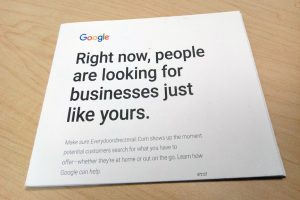
Don’t Look at the Wall
Two great quotes from Mario Andretti: “If everything seems under control you are not going fast enough.” and “Don’t look at the wall.”
CATEGORY

Two great quotes from Mario Andretti: “If everything seems under control you are not going fast enough.” and “Don’t look at the wall.”

Do you set daily goals? Do you think multitasking is helpful? Do you know the difference between motion and action? These 8 hacks will get your productivity — and your career — energized.

My colleague was at her wits’ end with a donor we’ll call Philip. Everything about Philip screamed MAJOR DONOR OF THE HIGHEST LEVEL! He had all three As of a great donor prospect.

There are many smart people walking around with brilliant ideas in their heads, but just a small few of them can manage to take action and make something happen.

Do you wish to be better than average in your career and in your life? If you do, then you need to behave in a better than average fashion. It’s an obvious statement, but an endless number of people belie this sound reasoning.

Long-term study shows multiple benefits for charities to get in the estate plan sooner. We all know charitable estate giving is a big deal. In comparison, despite all of the media attention and conversation generated by corporate giving, annual estate giving has always been much larger. (In some years, charitable estate gifts are more than double all corporate gifts.) Of course, we all know that to receive any estate dollars, your organization must get in the will or other estate

Question My nonprofit organization currently uses all bequest proceeds for operating expenses. The family of a recently deceased donor has questioned this and wants us to designate the funds for endowment (what is an endowment). What should we do? Answer It’s important to remember that only funds explicitly restricted by the donor can serve as a true endowment (importance by Deb Ashton). If a donor’s will does not specify a restriction, these funds are technically unrestricted and can be used
Our clients are some of the most successful, creative people in the planned giving community. We asked them what they’re grateful for, and here’s what they said. (Feel free to steal their ideas at your family feast on Thanksgiving.)

Originally published July 30, 2015. Updated for 2025. Summary: Why Benefits Always Win When it comes to planned giving marketing success, it’s not about the features—it’s about the emotional and personal benefits for the donor. That was the takeaway from a lively webinar featuring Viken Mikaelian and Tom Ahern, two industry veterans in donor engagement strategies. If you missed it, the recording will be available soon at PlannedGiving.guru. From Real Estate to Philanthropy I came to planned giving from the

So it’s settled. Direct mail is a good idea. My husband and I run a small business. A very small business. So I was a little surprised to find out that we’re on Google’s mailing list. I’d understand if they sent me an email, or maybe a personalized video pop-up on YouTube. But no … the King of the Internet sent me a good old-fashioned letter, in a paper envelope, with a stamp, delivered by the postman. Yes, direct mail.